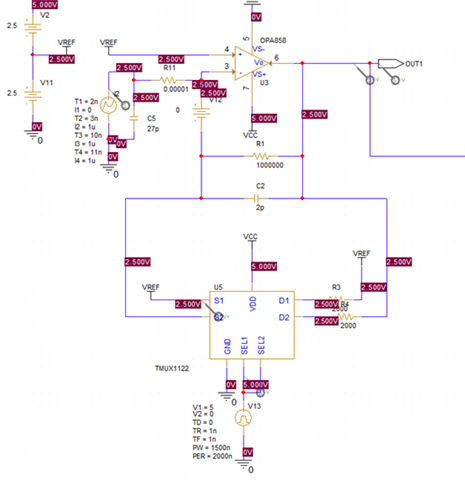Other Parts Discussed in Thread: TMUX1122, TINA-TI
Hello,
I am working at the software Pspice for TI, and I am designing a transimpedance circuit for photodiode sensing. My design demands many times of measure repeatedly (with a period at about 2us).

In the circuit, there is a T-gate switch which will control the gating measure (the TMUX1122, works with negative logic). I2 and C5 is an equivalent model for the photodiode.
In the simulation, V(out1) (the green) shows that the first measure works exactly the same as my expectation how the circuit would work like:
when the switch is closed, the circuit works as an integrator and the beginning voltage is the Vref (2.5V), and when the switch gets closed, the output reset at 2.5V.
But in the second and third measure, the integration still works but there is a voltage leap when the switch changed and il makes the beginning voltage is no longer 2.5V.
The current source I2 is fixed at 1uA at the simulation.
I suppose that there is some capacitive part keep charged even when the t-gate switch has closed and the voltage between input/output is the same. But I cannot find where it is, I think the C2 would be discharged when Vout = Vin.
Best regards,
Libin

